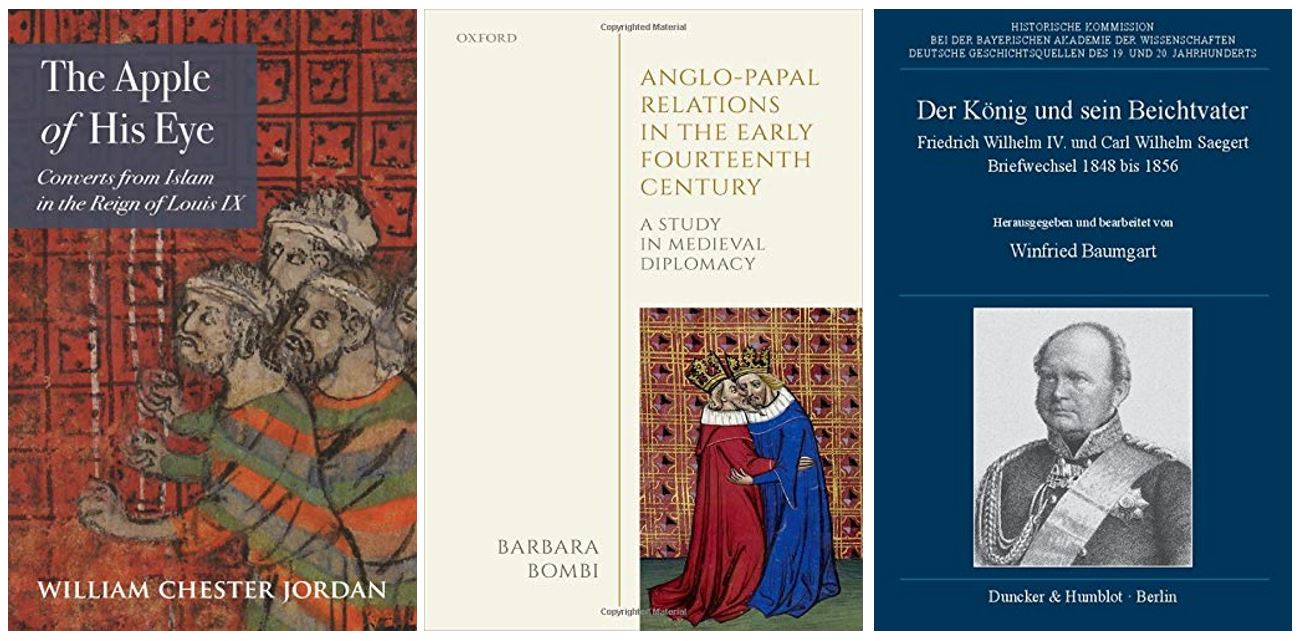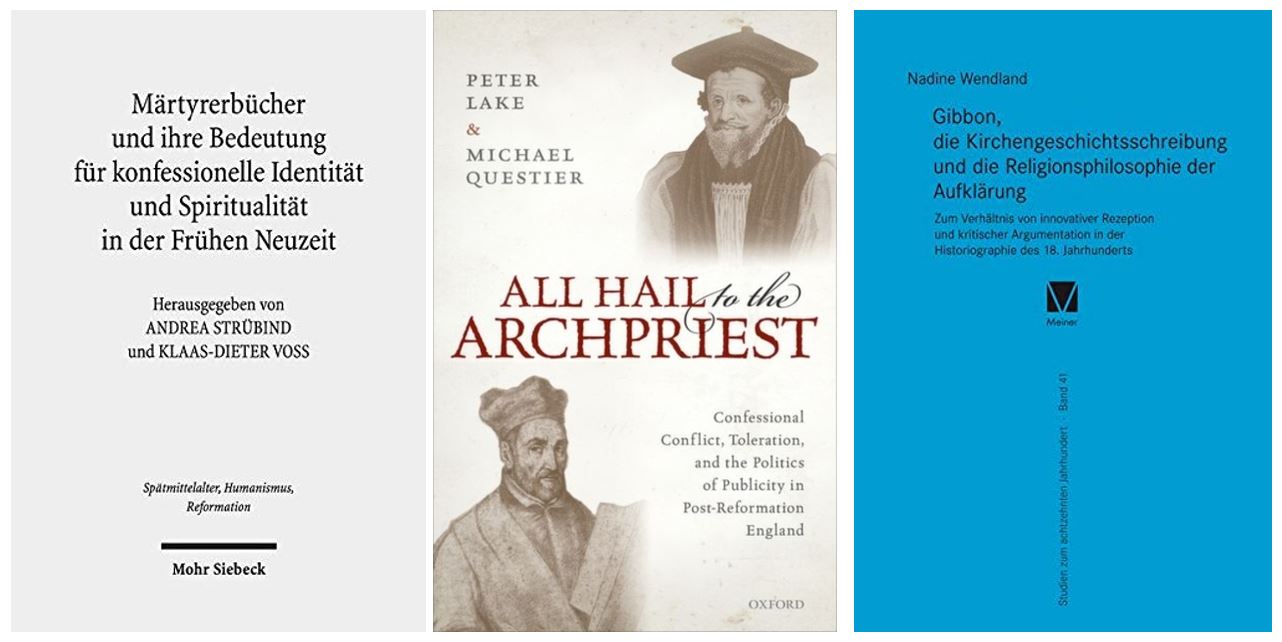Most followers of one of the larger world religions are, or certainly should be, concerned with history to some degree, since the great world religions of Judaism, Christianity, Islam and Buddhism are all very much “historical” religions, inescapably tied to the historical events of the life, works, and teachings of the Old Testament patriarchs and prophets, Jesus Christ, the Prophet Mohammad, and Siddhārtha Gautama Buddha.
But even atheists and the non-religious have ample cause to be interested in religions and their history, since religions have of course for millennia influenced the social, economic, cultural and political shape of the societies we live in today. They have stamped their marks on numerous and occasionally quite important aspects of everyday life, from a country’s national holidays and working week to the ethics and morals underlying its laws, or the shape of its towns and cities with their churches, mosques, and temples. Our personal and social lives are similarly permeated and moulded by religious teachings, from the form our relationships, marriages, and families take through to our personal attitudes towards and behaviour with regard to issues such as the environment, human rights, fair trade, or charity.
Religious history is thus very much not distinct from secular, social, political, economic, or intellectual history, but touches on all of these areas. And if that was not a wide enough field yet, in addition the subject matter of “history of religion” encompasses numerous facets from ecclesiastical and church history to the history of theology, the social history of religion, religious literature, the relationship of religion and politics, or the comparative history of religion. It is understandable, then, that the new books on the topic of the history of religion arrived at the Bodleian this month, which I would like to highlight in this month’s blog, touch only on a very small portion of what the subject has to offer.
Rulers and Religions
 The connection between rulers and religions is firmly tied in with the idea of the established church or state religion, whether this takes the form of mere government-sanctioned establishments of a religion, genuine theocracies, or, on the other side of the spectrum, an approved religion actually under the control of the state. The degree to which established national religions are imposed upon citizens by ruler and state has rather decreased over the last few centuries especially in European nations, but examples of very close connections between ruler and religion are numerous in both medieval and early modern Europe.
The connection between rulers and religions is firmly tied in with the idea of the established church or state religion, whether this takes the form of mere government-sanctioned establishments of a religion, genuine theocracies, or, on the other side of the spectrum, an approved religion actually under the control of the state. The degree to which established national religions are imposed upon citizens by ruler and state has rather decreased over the last few centuries especially in European nations, but examples of very close connections between ruler and religion are numerous in both medieval and early modern Europe.
A look at a ruler’s attitude towards religion as well as the relationship between Christianity and Islam during the age of the crusades is presented in William C. Jordan’s The Apple of his Eye, which discusses the efforts of Louis IX of France (Saint Louis) to convert Muslims to Christianity and repatriate them in France during the 13th century. Since Louis is rather better known for his strict attitude towards and often violent opposition of other religions – for example in his laws and edicts against the Jews, the use of the inquisition against the Cathars, or two crusades against the Muslims – these accounts of the peaceful conversion of Muslims highlight an interesting new facet of the saintly king’s character. The relationship of kingly rulers with members of their own, rather than a different religion, is the topic of Barbara Bombi’s monograph on Anglo-Papal Relations in the Early Fourteenth Century, which discusses the diplomacy between England and the papal curia during the reigns of Edward II and Edward III from 1305 to 1360. Bombi examines the diplomatic relationships in the light of several key events of these years, such as the papacy’s move to France after the election of Pope Clement V in 1305, the outbreak of the Hundred Years’ Wars in 1337, and the conclusion of the first phase of the war with the Treaty of Brétigny-Calais in 1360. A third newly arrived study on rulers and their attitudes towards religion examines royalty in 19th century Germany: Der König und sein Beichtvater offers an edition of the personal correspondence between the Prussian King Frederick William IV and his confessor Carl Wilhelm Saegert, as well as of Saegert’s diaries from the eventful months of the 1848 revolution. One of the king’s primary advisors on matters of national and international politics, Saegert’s low birth barred him from elevation to an official post on the king’s staff, but he remained in secret the king’s chief political advisor and emotional supporter for over seven years after 1848.
Religious Writings
 Sacred texts are at the centre of the three monotheistic religions Judaism, Christianity and Islam, but religions have of course produced a plethora of writings beyond these, from non-scriptural interpretations and commentaries and the literature of religious controversies to hagiographies and martyrologies, religious drama and poetry, prayers, hymns and service books, or church historiography.
Sacred texts are at the centre of the three monotheistic religions Judaism, Christianity and Islam, but religions have of course produced a plethora of writings beyond these, from non-scriptural interpretations and commentaries and the literature of religious controversies to hagiographies and martyrologies, religious drama and poetry, prayers, hymns and service books, or church historiography.
Martyrologies as a specific genre of early modern hagiographical writings and their impact on contemporary society is the subject of the conference proceedings collected in Märtyrerbücher und ihre Bedeutung für konfessionelle Identität und Spiritualität in der Frühen Neuzeit. The contributions cover martyrologies in England, France, Germany and the Netherlands, looking at the origins and printing histories of these martyrologies from the mid-16th to the 17th century, and the artwork and imagery that accompanied them, but also at their roles in the reformation history of the various European countries, both as a means of strengthening the identity of religious communities and as instruments of religious prosecution. Writings concerned with religious debate and dispute, and the issue of religion and public politics, are at the heart of Peter Lake’s and Michael Questier’s All Hail to the Archpriest, an edition of the rich pamphlet literature occasioned by the “Archpriest Controversy” or “Appellant Controversy”, the debate which followed Pope Clement VIII’s appointment of an archpriest to oversee Catholic priests in England at the end of the 16th century. The pamphlets shed light on issues such as late Elizabethan puritanism and the function of episcopacy, as well as on the accession of James VI in England and the relationship between Protestants and Catholics in this troubled period. Even more religious controversy related to writing from the early modern period is the subject of Nadine Wendland’s Gibbon, die Kirchengeschichtsschreibung und die Religionsphilosophie der Aufklärung, a study of Gibbon’s 1776 The History of the Decline and Fall of the Roman Empire, whose first volume with its descriptions of early Roman Christianity and persecution provoked outrage among British theologians. The study focusses on Gibbbon’s bias in portraying historical events and figures, examining his methods in dealing with such topics as Christian miracles and heresy, and his handling and reception of authors such as Voltaire and David Hume.
Religion, Politics and Society
 That not only the presence of religion but also its absence or diminishing can have a profound impact on society and politics is shown in the essay collection Säkularisierung und Religion: Europäische Wechselwirkungen. The contributions discuss definitions and theories of secularization with reference to both a historical and a contemporary context, examine historical phases of secularization and their possible causes, the theoretical and practical reactions of different religions to the phenomenon, and its substantial repercussions for both society and politics. The often religiously connoted idea of “reconciliation” with a view to national politics is the subject of a second essay collection newly arrived this month, Versöhnungsprozesse zwischen Religion, Politik und Gesellschaft. The contributions by historians, political scientists, sociologists and theologians look at processes of reconciliation as driven by participants from churches, politics and society, examining factors that influence the process of reconciliation and its successes, obstacles and setbacks. They offer a wide range of case studies on international reconciliation processes from the second half of the 20th century, such as those between Germany and France, Russian and Finland, the countries of the former Yugoslavia, South and North Korea, East Germany, and South Africa. Finally, an even more widespread view of religion and politics than either of these two volumes, both in terms of geography and chronology, is taken by Alan Strahern in his Unearthly Powers: Religious and Political Change in World History. Drawing on examples from Ancient Rome to the Incas and 19th-century Tahiti, and dicussing a number of religious phenomena from sacred kingship to reformation, iconoclasm, and conversion, Strahern’s book tackles such fundamental questions as the importance of religion for rulers in the pre-modern world, the emergence and spread of the great world religions of Christianity, Islam and Buddhism, the nature of both immanent and transcendent religions, and how the interaction of religion with political authority shaped the course of world history.
That not only the presence of religion but also its absence or diminishing can have a profound impact on society and politics is shown in the essay collection Säkularisierung und Religion: Europäische Wechselwirkungen. The contributions discuss definitions and theories of secularization with reference to both a historical and a contemporary context, examine historical phases of secularization and their possible causes, the theoretical and practical reactions of different religions to the phenomenon, and its substantial repercussions for both society and politics. The often religiously connoted idea of “reconciliation” with a view to national politics is the subject of a second essay collection newly arrived this month, Versöhnungsprozesse zwischen Religion, Politik und Gesellschaft. The contributions by historians, political scientists, sociologists and theologians look at processes of reconciliation as driven by participants from churches, politics and society, examining factors that influence the process of reconciliation and its successes, obstacles and setbacks. They offer a wide range of case studies on international reconciliation processes from the second half of the 20th century, such as those between Germany and France, Russian and Finland, the countries of the former Yugoslavia, South and North Korea, East Germany, and South Africa. Finally, an even more widespread view of religion and politics than either of these two volumes, both in terms of geography and chronology, is taken by Alan Strahern in his Unearthly Powers: Religious and Political Change in World History. Drawing on examples from Ancient Rome to the Incas and 19th-century Tahiti, and dicussing a number of religious phenomena from sacred kingship to reformation, iconoclasm, and conversion, Strahern’s book tackles such fundamental questions as the importance of religion for rulers in the pre-modern world, the emergence and spread of the great world religions of Christianity, Islam and Buddhism, the nature of both immanent and transcendent religions, and how the interaction of religion with political authority shaped the course of world history.
You can find more books on the subject on our online LibraryThing shelf tagged with religious history or church history.

